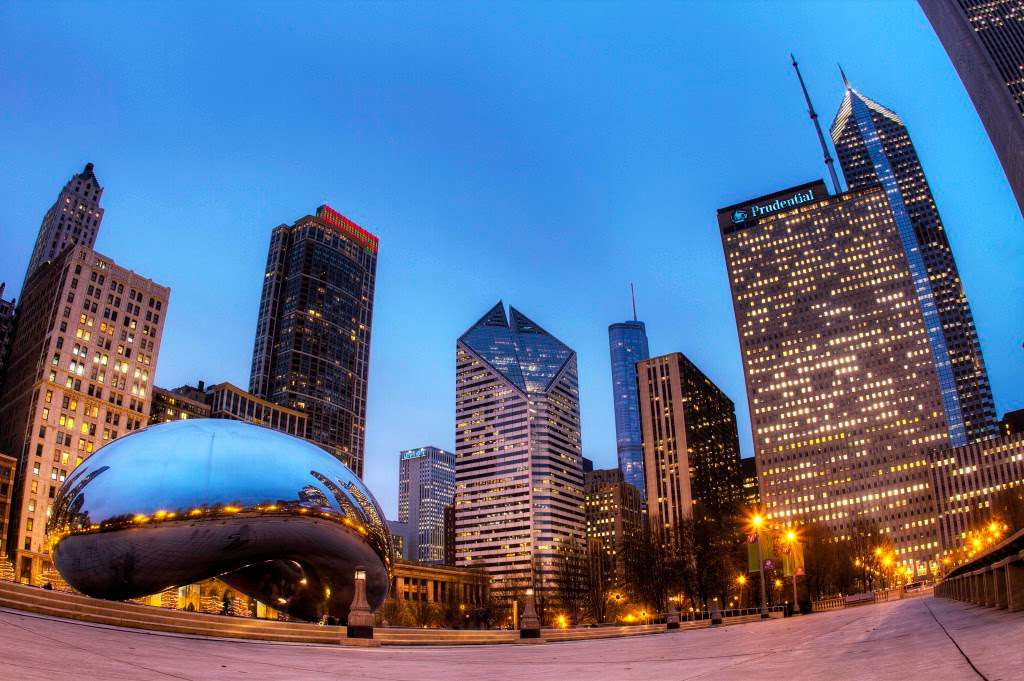Chicago
A Brief History (& Population)
Foundation
The history of Chicago begins in 1673, when two French men Jacques Marquette and Louis Joliet in the area, although they did not settle there. The first non-indigenous person, who first built his home in the avenue was an African American man from the Caribbean called Jean Baptiste Point du Sable, in 1779.
19th century
In the 1830s Chicago grew rapidly. Chicago was incorporated as a town in 1833 despite having a population of a few hundred. By 1837, Chicago was made a city with a population of 4,000.
Chicago boomed during the 1840s and by 1850 it had a population of 30,000. In the next decade it grew at an astonishing rate. By 1860 the population of Chicago was 109,000.
The Illinois and Michigan Canal opened in 1848 and by 1860 15 railroad companies had a terminus in Chicago, which made the city a transportation hub of the USA.
By 1870 the population of Chicago had risen to about 300,000. However Chicago was devastated by a fire in 1871. The Chicago fire began on the evening of 8 October in a barn. According to legend it was caused by a cow knocking over a lamp. Chicago was soon rebuilt and in the late 19th century it continued to grow rapidly. By 1880 the population of Chicago reached 503,000. It continued to rise rapidly. By 1900 the population was almost 1.7 million.
In May 1886 there was a strike in Chicago in support of an 8-hour day. On the evening of 4 May a rally was held in Haymarket Square. The police ordered the demonstrators to leave and somebody threw a pipe bomb into their ranks. The police responded by firing into the crowd. Afterwards anarchists were rounded up and eventually 4 were hanged.
In the last years of the 19th century Chicago continued to grow at an astonishing rate while the first skyskapers appeared.
20th Century
In 1903 the city of Chicago suffered a disaster when a fire broke out in the Iroquois Theater and nearly 600 people died. It was replaced by the Oriental Theater in 1925.
By 1920 the population had reached 2.7 million. By 1930 it was 3,376,000.
In 1927 Chicago Municipal Airport opened. (it is now called Midway Airport)
In 1942 Enrico Fermi carried out the first controlled nuclear reaction at Chicago University.
A notorious event in the history of Chicago was the St Valentine's Day Massacre of 1929. Al Capone planned to kill his enemy, a man named George 'Bugs' Moran. At 10.30 am on 14 February, St Valentine's Day, a car (looked like a car used by detectives) went to a garage on North Side, with two men dressed as police officers. The car stopped outside the garage and the two men posing as detectives got out. At that moment Bugs Moran and his two bodyguards approached. Seeing the two fake policemen they thought it was a police raid and they walked away. Bugs Moran survived, while 7 men in the garage were murdured by machine guns.
In 1950 the population of Chicago peaked at 3.6 million. However in the late 20th century the population of the city gradually declined.
In 1979 Jane Byrne became the first female mayor of Chicago, Harold Washington became the first African-American mayor in 1983.
In 1990 Chicago ceased to be the second largest city in the USA.
Meanwhile in 1968 the first Special Olympics were held in Chicago.
21th Century
The 21st century Chicago is still flourishing. Millennium Park opened in 2004 and Spertus Museum opened in 2007. Trump International Hotel and Tower was built in 2009. Today the population of Chicago is 2.7 million.
